Nathan D. Cahill
Memory Efficient Experience Replay for Streaming Learning
Sep 16, 2018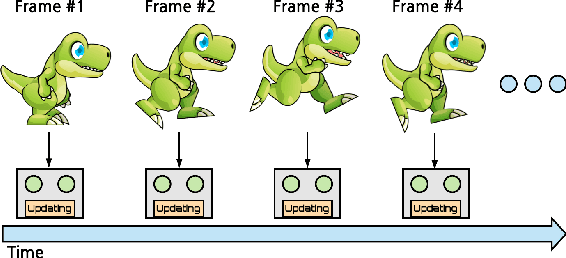


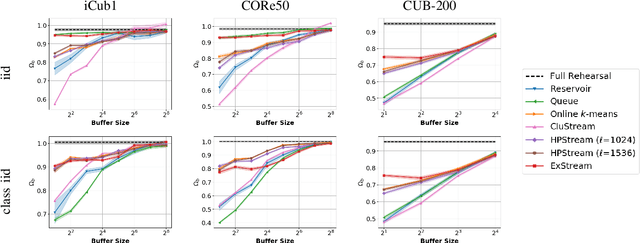
Abstract:In supervised machine learning, an agent is typically trained once and then deployed. While this works well for static settings, robots often operate in changing environments and must quickly learn new things from data streams. In this paradigm, known as streaming learning, a learner is trained online, in a single pass, from a data stream that cannot be assumed to be independent and identically distributed (iid). Streaming learning will cause conventional deep neural networks (DNNs) to fail for two reasons: 1) they need multiple passes through the entire dataset; and 2) non-iid data will cause catastrophic forgetting. An old fix to both of these issues is rehearsal. To learn a new example, rehearsal mixes it with previous examples, and then this mixture is used to update the DNN. Full rehearsal is slow and memory intensive because it stores all previously observed examples, and its effectiveness for preventing catastrophic forgetting has not been studied in modern DNNs. Here, we describe the ExStream algorithm for memory efficient rehearsal and compare it to alternatives. We find that full rehearsal can eliminate catastrophic forgetting in a variety of streaming learning settings, with ExStream performing well using far less memory and computation.
Compassionately Conservative Balanced Cuts for Image Segmentation
Mar 27, 2018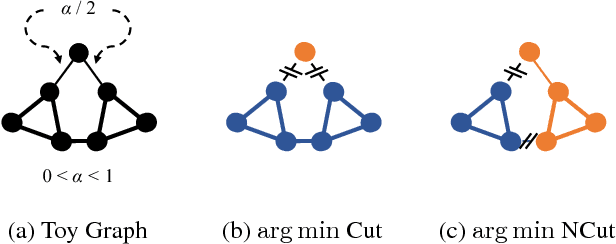
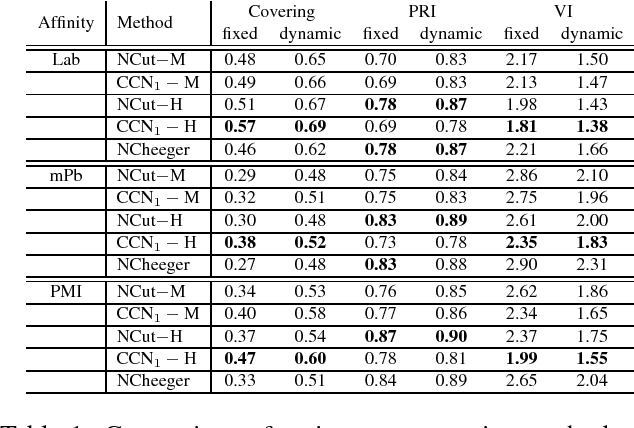
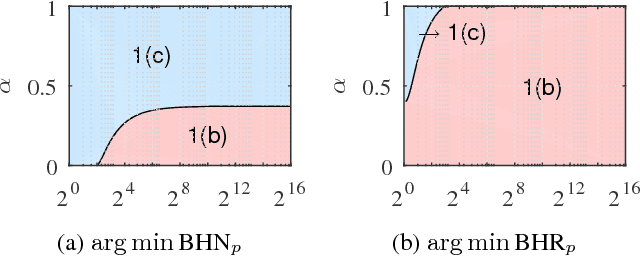

Abstract:The Normalized Cut (NCut) objective function, widely used in data clustering and image segmentation, quantifies the cost of graph partitioning in a way that biases clusters or segments that are balanced towards having lower values than unbalanced partitionings. However, this bias is so strong that it avoids any singleton partitions, even when vertices are very weakly connected to the rest of the graph. Motivated by the B\"uhler-Hein family of balanced cut costs, we propose the family of Compassionately Conservative Balanced (CCB) Cut costs, which are indexed by a parameter that can be used to strike a compromise between the desire to avoid too many singleton partitions and the notion that all partitions should be balanced. We show that CCB-Cut minimization can be relaxed into an orthogonally constrained $\ell_{\tau}$-minimization problem that coincides with the problem of computing Piecewise Flat Embeddings (PFE) for one particular index value, and we present an algorithm for solving the relaxed problem by iteratively minimizing a sequence of reweighted Rayleigh quotients (IRRQ). Using images from the BSDS500 database, we show that image segmentation based on CCB-Cut minimization provides better accuracy with respect to ground truth and greater variability in region size than NCut-based image segmentation.
Efficiently Computing Piecewise Flat Embeddings for Data Clustering and Image Segmentation
Dec 20, 2016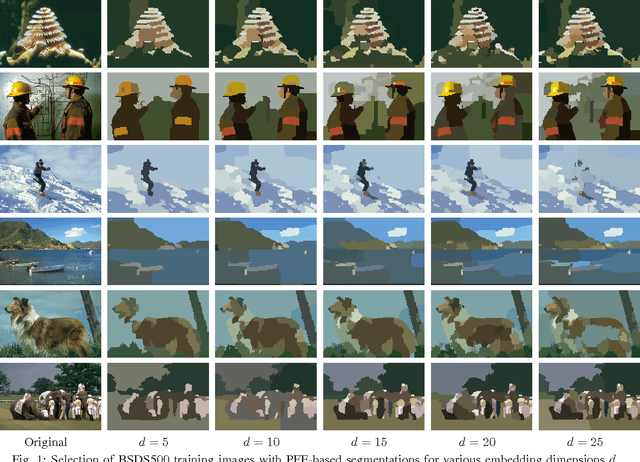
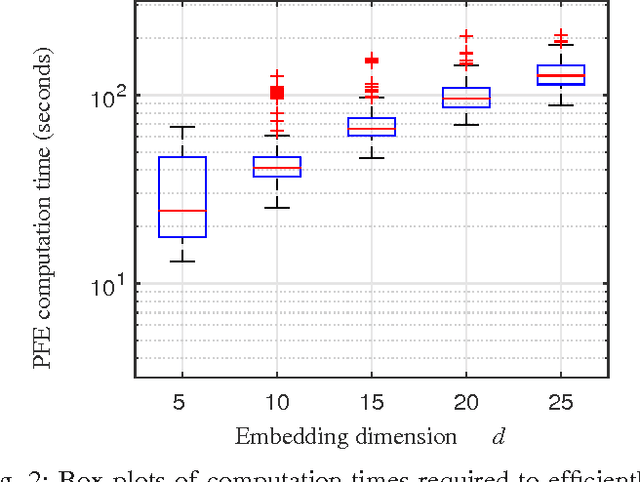
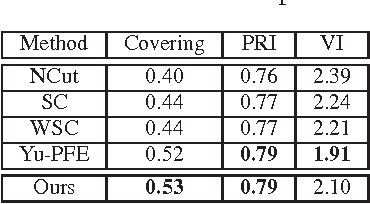
Abstract:Image segmentation is a popular area of research in computer vision that has many applications in automated image processing. A recent technique called piecewise flat embeddings (PFE) has been proposed for use in image segmentation; PFE transforms image pixel data into a lower dimensional representation where similar pixels are pulled close together and dissimilar pixels are pushed apart. This technique has shown promising results, but its original formulation is not computationally feasible for large images. We propose two improvements to the algorithm for computing PFE: first, we reformulate portions of the algorithm to enable various linear algebra operations to be performed in parallel; second, we propose utilizing an iterative linear solver (preconditioned conjugate gradient) to quickly solve a linear least-squares problem that occurs in the inner loop of a nested iteration. With these two computational improvements, we show on a publicly available image database that PFE can be sped up by an order of magnitude without sacrificing segmentation performance. Our results make this technique more practical for use on large data sets, not only for image segmentation, but for general data clustering problems.
Multiple-View Spectral Clustering for Group-wise Functional Community Detection
Nov 21, 2016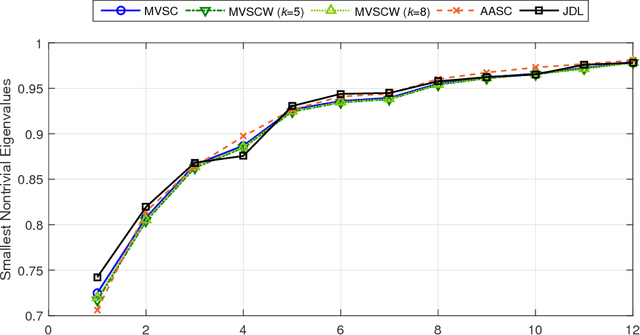
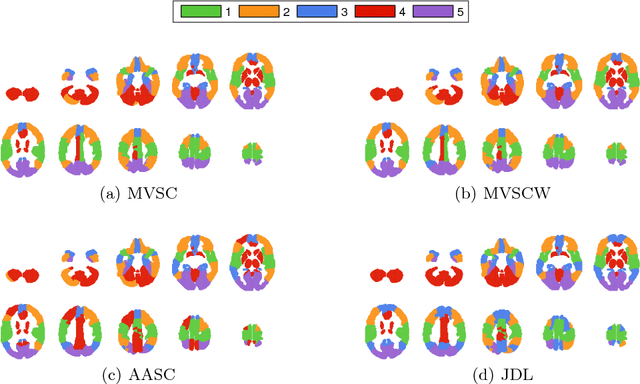
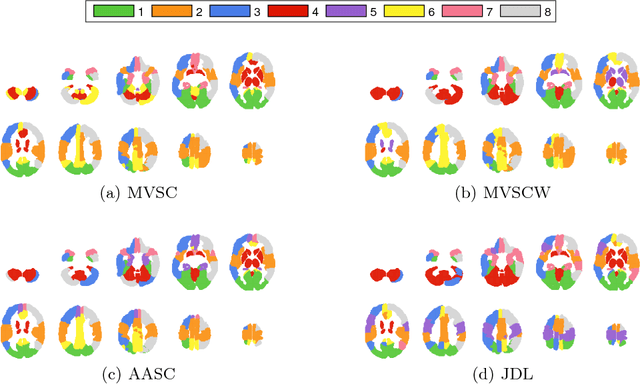
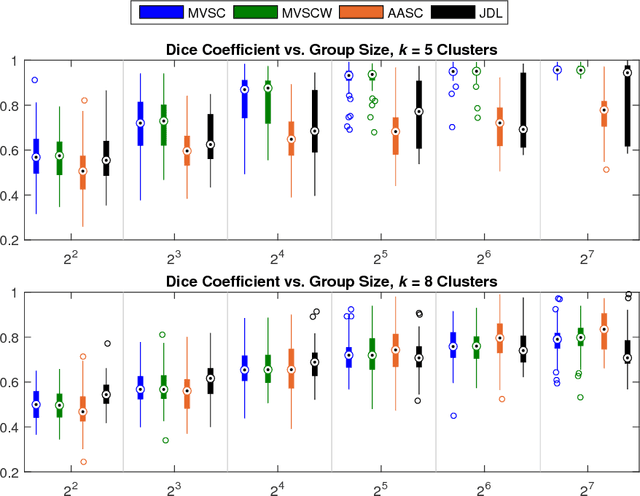
Abstract:Functional connectivity analysis yields powerful insights into our understanding of the human brain. Group-wise functional community detection aims to partition the brain into clusters, or communities, in which functional activity is inter-regionally correlated in a common manner across a group of subjects. In this article, we show how to use multiple-view spectral clustering to perform group-wise functional community detection. In a series of experiments on 291 subjects from the Human Connectome Project, we compare three versions of multiple-view spectral clustering: MVSC (uniform weights), MVSCW (weights based on subject-specific embedding quality), and AASC (weights optimized along with the embedding) with the competing technique of Joint Diagonalization of Laplacians (JDL). Results show that multiple-view spectral clustering not only yields group-wise functional communities that are more consistent than JDL when using randomly selected subsets of individual brains, but it is several orders of magnitude faster than JDL.
 Add to Chrome
Add to Chrome Add to Firefox
Add to Firefox Add to Edge
Add to Edge